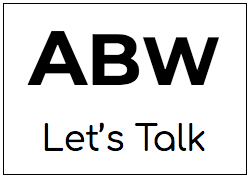Intern Event 2014: Storytelling in Journalism
“Journalists are observers. You’re observers and then the tellers of what you’ve seen,” said Meghan Dhaliwal, multimedia projects coordinator at the Pulitzer Center.
The importance of storytelling in journalism was the subject of conversation at the Pulitzer Center’s summer interns event on Wednesday, July 23, 2014. Interns from the University of California, Irvine, College of William and Mary, the University of Chicago, and Princeton University were invited to participate in an event titled “Crafting and Communicating the Stories of Our Time,” led by Dhaliwal and Steve Sapienza, senior producer at the Pulitzer Center. The informal discussion considered the advantages of different journalistic media–print, photo, and video journalism–in communicating news to the public, as well as the benefits of employing a journalistic mentality in any field of work.
Sapienza presented a short video piece he had done for PBS NewsHour on labor abuses in the Thai shrimp industry and discussed how conversations with NGOs, labor organizations, and the United Nations can often help a journalist gain access to subjects for interviews and information about their stories. “The best stories are character-driven,” he said, highlighting the importance of getting local perspectives on news stories. Another thing to think about when pitching stories? The audience.
According to Sapienza, most major media outlets want to feature stories that “feel relevant to people in the U.S." The fact that major U.S. grocery and restaurant chains import shrimp from Thailand is one aspect of the story that helped it get such prominent media placement.
The conversation then shifted from video journalism to photography, as Dhaliwal presented work from “Changing Water: Cholera Permeates Life in Haiti,” a project she had done as a student fellow from the Pulitzer Center's Campus Consortium partner Boston University. She discussed the challenges of writing about public health issues and the virtues and vices of photojournalism. “It’s easy to take clichéd pictures,” she said, or to let your biases cloud the way you illustrate the story. When asked for possible solutions to counteract these obstacles, Dhaliwal replied that she likes to sit in on interviews of her subjects to let their stories “inform the image-making process.”
The event ended with an open Q&A discussion. Sapienza and Dhaliwal were asked questions about their process for finding new stories and how being a journalist has impacted their outlook on the world. Both recommended becoming avid consumers of both local and global news: “if you read a lot you’ll be able to find the holes in others’ reporting. Those holes will tell you where to start,” said Sapienza. Dhaliwal reiterated this point. “Following leads is key,” she said. “A small facet of someone else’s story can become yours.” They agreed that curiosity is central to both journalism and being a good storyteller.
At the end of the day, said Sapienza, “we’re distillers of information.”




